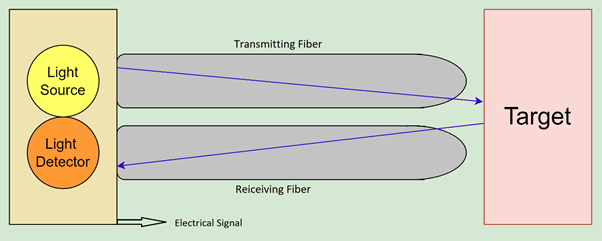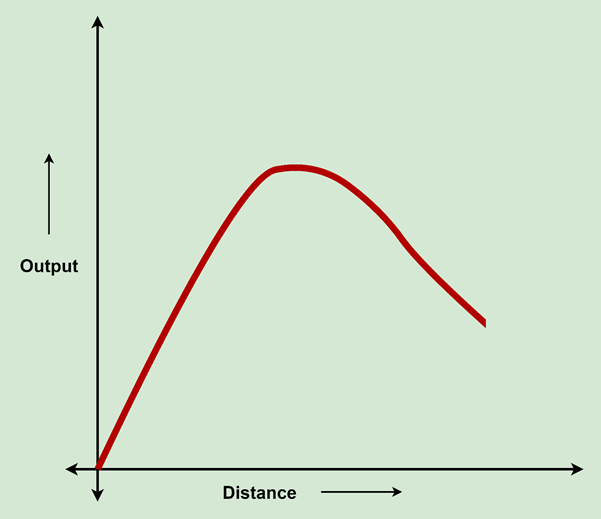A fotonic sensor is a non-contact type of sensor used for the measurement of quantities like displacement, position, and vibration of any surface. The working of the fotonic sensor is dependent on the fiber optics principle.
Working principle of Fotonic Sensor
Fotonic sensors use optical fiber along with electronic circuits for the precise measurement of displacement, position, and vibration. Because of the use of fiber optics, fotonic sensors can work with almost all surfaces like plastic, metal, ceramic, liquid, and even with glass. Also, the response of the fotonic sensor is very fast because this sensor uses fiber optics whose speed is much high.
Construction of Fotonic Sensor
Fotonic sensor’s construction is very simple. A fotonic sensor consists of a light emitting light source, a light receiving light detector, a transmitting fiber for transmitting the light, a receiving fiber for receiving the reflected light from the surface, and an electronic circuit for detecting the desired quantity i.e. displacement, position, or vibration.

Working of Fotonic Sensor
As seen in the figure, the target placed at some distance will reflect back some of the light back to the fotonic sensor. When there is no gap between the target and the fotonic sensor’s tip, there is no reflection of light from the target. When the gap between the target and the fotonic sensor’s tip increases, the light also starts reflecting and goes to the receiving fiber. There is a change in intensity when the target moves in either direction.
When the target moves towards the fotonic sensor’s tip, there is less light reflection due to less surface area. Due to this, the intensity of light is also less. Now as the target starts moving away from the fotonic sensor’s tip, there is more gap between the fotonic sensor’s tip and the target. Because of this, the intensity of light getting deflected also increases. This is again sensed by the light detector.
The relationship between the distance between the fotonic sensor tip and the intensity of the light received back by the light detector is directly proportional. But the proportionality is linear until the gap between the fotonic sensor’s tip and the target is less than or equal to the diameter of the fotonic sensor’s tip.
The intensity of the light will continue to increase until the gap between the fotonic sensor’s tip and the target is approximately the same as that of the fotonic sensor’s tip diameter. As the distance between the fotonic sensor tip and the target surface increases above the fotonic sensor’s tip diameter, the light intensity which is received by the light detector will continue to decrease which is shown in the graph.

Advantages of Fotonic Sensor
- Fotonic sensor is a non-contact type of sensor, which make it very easy to measure displacement, position, or vibration of high temperature or hazardous materials.
- No moving parts are present in fotonic sensor and hence maintenance is very less.
- Fotonic sensors can be used for any surface.
- The response of the fotonic sensor is very fast.
Disadvantages of Fotonic Sensor
- As there is the use of light in the working of the fotonic sensor, the surrounding light affects the working of the fotonic sensor.
- The calibration procedure of fotonic sensor is a very typical and challenging process. Special skills are needed to calibrate a fotonic sensor.
- There are limitations in measuring the parameters like displacement, position, or vibration when the distance between the fotonic sensor and target increases above the diameter of fotonic sensor’s tip.